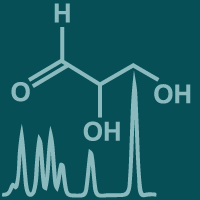Topic Menu
► Topic MenuTopic Editors

2. Department of Ophthalmology, School of Medicine, Keio University, 35 Shinanomachi, Shinjuku-ku, Tokyo 160-8582, Japan
Pathophysiology of Aging and Age-related Diseases
Topic Information
Dear Colleagues,
Oxidative stress is generated daily; however, when it exceeds the capacity of self-limiting mechanism, it causes decompensation of the tissue/organ function. The mechanism may be involved in tissue/organ functional disorders during physiological aging and pathogenesis of age-related diseases. In order to develop novel therapeutic approaches for treating and preventing age-related diseases, as well as preserve healthy aging, both of which lead to a better quality of life, this Interdisciplinary Topic pays special attention to the molecular mechanisms, biomarkers, epidemiology, therapeutic proof of concept, and clinical trials which could open up a new era in the medical fields of aging and age-related diseases.
We invite you to contribute an original paper or a review paper on recent novel concepts based on basic and/or clinical research to understand mechanisms of age-related diseases, metabolic syndrome, neurodegeneration, longevity, and so on.
Prof. Dr. Yoko Ozawa
Prof. Dr. Yasumichi Arai
Dr. Sumihiro Maeda
Topic Editors
Keywords
- aging
- age-related diseases
- metabolic syndrome
- inflammation
- epidemiology
- model animals and cells
- iPS cells
Participating Journals
| Journal Name | Impact Factor | CiteScore | Launched Year | First Decision (median) | APC |
|---|---|---|---|---|---|

Antioxidants
|
6.0 | 10.6 | 2012 | 16.9 Days | CHF 2900 |

Brain Sciences
|
2.7 | 4.8 | 2011 | 15.6 Days | CHF 2200 |

Medicina
|
2.4 | 3.3 | 1920 | 17.1 Days | CHF 2200 |

Metabolites
|
3.5 | 5.7 | 2011 | 16.1 Days | CHF 2700 |

Preprints.org is a multidisciplinary platform offering a preprint service designed to facilitate the early sharing of your research. It supports and empowers your research journey from the very beginning.
MDPI Topics is collaborating with Preprints.org and has established a direct connection between MDPI journals and the platform. Authors are encouraged to take advantage of this opportunity by posting their preprints at Preprints.org prior to publication:
- Share your research immediately: disseminate your ideas prior to publication and establish priority for your work.
- Safeguard your intellectual contribution: Protect your ideas with a time-stamped preprint that serves as proof of your research timeline.
- Boost visibility and impact: Increase the reach and influence of your research by making it accessible to a global audience.
- Gain early feedback: Receive valuable input and insights from peers before submitting to a journal.
- Ensure broad indexing: Web of Science (Preprint Citation Index), Google Scholar, Crossref, SHARE, PrePubMed, Scilit and Europe PMC.



